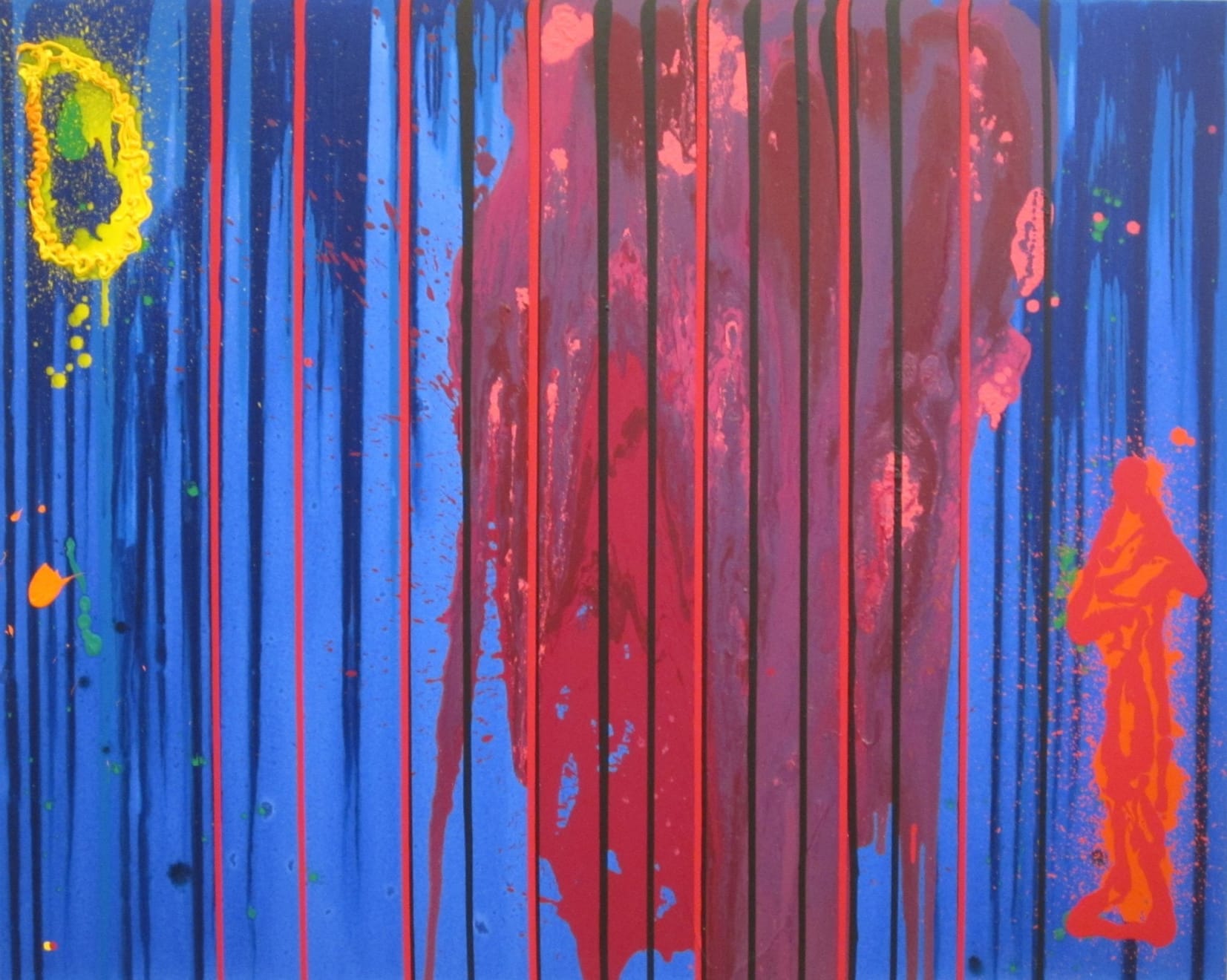John Hoyland
Follow Your Bliss, 2000
Acrylic on canvas
63 x 78 3/4 in
160 x 200 cm
160 x 200 cm
Signed, titled & dated on reverse
Copyright The Artist
John Hoyland (1934 - 2011) trained at Sheffield College of Art (1951–6) and the Royal Academy Schools (1956–60). He began by 1954 to paint Sheffield landscapes and abstractions from still-life...
John Hoyland (1934 - 2011) trained at Sheffield College of Art (1951–6) and the Royal Academy Schools (1956–60). He began by 1954 to paint Sheffield landscapes and abstractions from still-life subjects. At the Situation exhibitions of 1960–61 he showed some of his earliest fully abstract paintings in which he used bands of colour to explore perceptual effects such as the relationship of image to background or to create the illusion of buckling the picture-plane. This geometric character soon gave way to sinuous lines enclosing discs of colour, and eventually to a freer and more fluid application of paint.
Hoyland's visit to New York in 1964 brought him into contact with Helen Frankenthaler, Kenneth Noland and Jules Olitski and the critic Clement Greenberg, who showed him the work of Hans Hofmann and Morris Louis. Elements from these American developments, especially from colour field painting and Post-painterly Abstraction, feature prominently in subsequent canvases by Hoyland such as 1.11.68 (1968; London, Tate) in the use of staining techniques and acrylic paint, the interaction of unmixed colours, and an emphasis on the material weight of paint. Hoyland came to reject the American tendency to reductivism, concentrating in later paintings on the approach exemplified by Hofmann and de Staël, with varied and tactile paint surfaces and a disposition of blocks of different colours to create sensations of advancing and receding space. From the late 1960s Hoyland applied these methods also to screenprints, lithographs and later to etchings and monotypes.
Hoyland's visit to New York in 1964 brought him into contact with Helen Frankenthaler, Kenneth Noland and Jules Olitski and the critic Clement Greenberg, who showed him the work of Hans Hofmann and Morris Louis. Elements from these American developments, especially from colour field painting and Post-painterly Abstraction, feature prominently in subsequent canvases by Hoyland such as 1.11.68 (1968; London, Tate) in the use of staining techniques and acrylic paint, the interaction of unmixed colours, and an emphasis on the material weight of paint. Hoyland came to reject the American tendency to reductivism, concentrating in later paintings on the approach exemplified by Hofmann and de Staël, with varied and tactile paint surfaces and a disposition of blocks of different colours to create sensations of advancing and receding space. From the late 1960s Hoyland applied these methods also to screenprints, lithographs and later to etchings and monotypes.
Provenance
Directly from the artist
Collection Martin Krajewski
